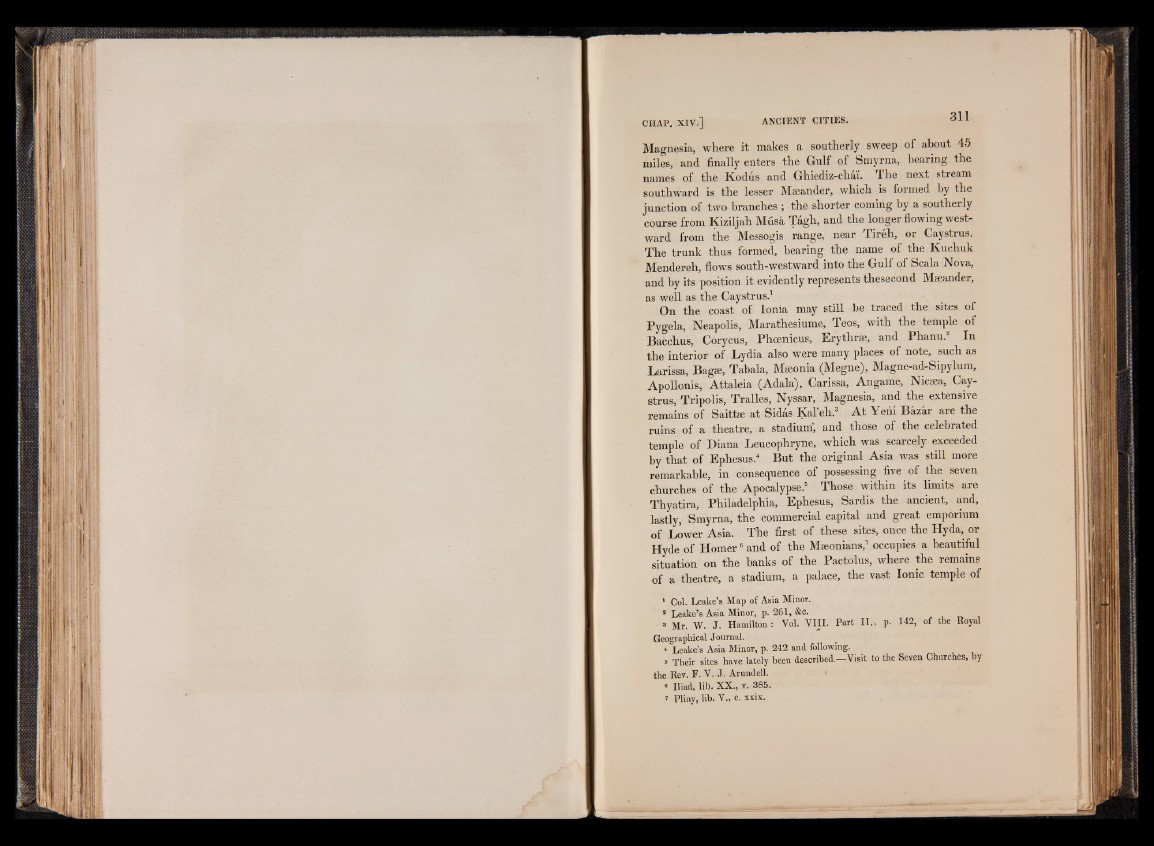
Magnesia, where it makes a southerly sweep of about 45
miles, and finally enters the Gulf of Smyrna, bearing the
names of the Kodus and Ghiediz-chai. The next stream
southward is the lesser Mseander, which is formed by the
junction of two branches ; the shorter coming by a southerly
course from Kiziljah Musa Tagh, and the longer flowing westward
from the Messogis range, near Tireh, or Caystrus.
The trunk thus formed, bearing the name of the Kuchuk
Mendereh, flows south-westward into the Gulf of Scala Nova,
and by its position it evidently represents thesecond Meeander,
as well as the Caystrus.1
On the coast of Ionia may still be traced the sites of
Pygela, Neapolis, Marathesiume, Teos, with the temple of
Bacchus, Corycus, Phoenicus, Erythr®, and Phanu.2 In
the interior of Lydia also were many places of note, such as
Larissa, Bag*, Tabala, Maeonia (Megne), Magne-ad-Sipylum,
Apollonis, Attaleia (Adala), Carissa, Angame, Nicsea, Caystrus,
Tripolis, Tralles, Nyssar, Magnesia, and the extensive
remains of Saittee at Sidas Kal’eh.3 At Yeni Bazar are the
ruins of a theatre, a stadium" and those of the celebrated
temple of Diana Leucophryne, which was scarcely exceeded
by that of Ephesus.4 But the original Asia was still more
remarkable, in consequence of possessing five of the seven
churches of the Apocalypse.5 Those within its limits are
Thyatira, Philadelphia, Ephesus, Sardis the ancient, and,
lastly, Smyrna, the commercial capital and great emporium
of Lower Asia. The first of these sites, once the Hyda, or
Hyde of Homer6 and of the Mseonians,7 occupies a beautiful
situation on the banks of the Pactolus, where the remains
of a theatre, a stadium, a palace, the vast Ionic temple of
1 Col. Leake’s Map of Asia Minor.
8 Leake’s Asia Minor, p. 261, &c. , , „ ,
3 Mr. W. J . Hamilton : Vol. V III. Part I I ., p. 142, of the Royal
Geographical Journal.
4 Leake’s Asia Minor, p. 242 and following.
s Their sites have lately been described.—Visit to the Seven Churches, by
the Rev. F. V. J. Arundell.
6 Iliad, lib. XX., v. 385.
1 Pliny, lib. V., c. xxix.